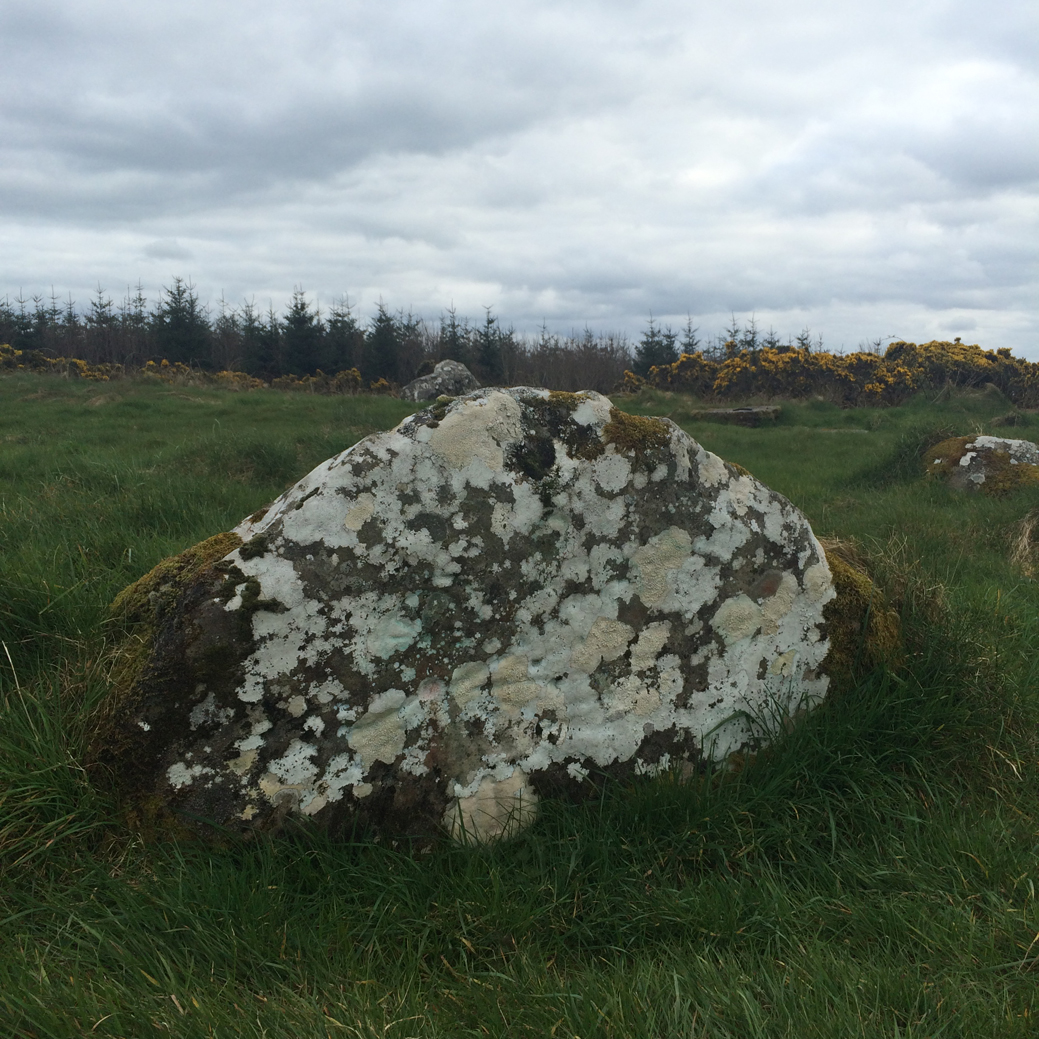









Dappled sunshine obscures the 16 or so cup marks, some of them quite deep and pronounced.









Between the tea tent and the parade ring at this point-to-point race venue.



Lichen has almost completely ‘whitewashed’ the ‘sundial’ stone. Still...


Very faint carvings, disappearing fast, on the left-hand stone of the rear recess.




W, looking north-west towards Slieve Gullion, on the right on the horizon line.



Some cite a legend that the stone rolls down the low hill every night at midnight only to reappear each morning, though sceptics scoff at such superstition and say it only happens every Halloween.
The Guardian, 5/4/16
;-)
Damage to an ancient dolmen in Brittas Bay has been reported to the gardaí and the National Monument Service.
The megalithic tomb named the Castletimon Dolmen dates back close to 4,000 years and is a protected monument.
Part of the structure appears to have been knocked down, while stones and earth have been pulled away.
Steven Brennan of the Brittas Bay Tourism Association said the destruction of the Dolmen has caused widespread local anger.
‘I was pretty shocked when I first saw the damage. People are very annoyed. It’s a very historic area and needs to be treated with the respect it deserves.
‘People are embarrassed by this incident. It’s one of Wicklow’s oldest human structures and is one of only four on the east coast of Ireland.‘
The whole area is of significant historical importance with a number of standing stones, cairns, a fourth century Ogham stone and a recently newly discovered standing stone. There is also a sixth century monastery nearby which was second in importance only to Glendalough.

South towards Poulaphuca reservoir and Moanbane.




Small standing stone in this site-rich area.

Looking west towards Poulaphuca reservoir and Blessington, down the direction of the recently re-discovered (using satellite photos) cursus that is said to terminate at the cairn. I couldn’t figure it out on the ground.


The cairn is just the other side of the fence. Seahan and Seefin are the hills to the north.

The remains of the cairn with Sorrel Hill over its top.
By Andrew Curry
Mar. 24, 2016 , 9:30 AM
About 3200 years ago, two armies clashed at a river crossing near the Baltic Sea. The confrontation can’t be found in any history books—the written word didn’t become common in these parts for another 2000 years—but this was no skirmish between local clans. Thousands of warriors came together in a brutal struggle, perhaps fought on a single day, using weapons crafted from wood, flint, and bronze, a metal that was then the height of military technology.
Struggling to find solid footing on the banks of the Tollense River, a narrow ribbon of water that flows through the marshes of northern Germany toward the Baltic Sea, the armies fought hand-to-hand, maiming and killing with war clubs, spears, swords, and knives. Bronze- and flint-tipped arrows were loosed at close range, piercing skulls and lodging deep into the bones of young men. Horses belonging to high-ranking warriors crumpled into the muck, fatally speared. Not everyone stood their ground in the melee: Some warriors broke and ran, and were struck down from behind.
When the fighting was through, hundreds lay dead, littering the swampy valley. Some bodies were stripped of their valuables and left bobbing in shallow ponds; others sank to the bottom, protected from plundering by a meter or two of water. Peat slowly settled over the bones. Within centuries, the entire battle was forgotten.




A quick note here to say that these stones are in danger of disappearing off the radar altogether. I’ve never quite figured out why they are here in the first place, there being no ecclesiastical site nearby, and just the ogham stone up the road at Knickeen. But they are not looked after in any way, despite there being two stones of seeming great significance.
It’s hard to say when the better time is to visit here – spring-time when the vegetation hasn’t yet thrived but the ground is marshy and muddy or summer/autumn time, when the ground may have dried out a bit, but the plants have taken over.
My favourite of the lot, the one with six basins, is completely submerged – I guess I lucked out that day, 10 years ago when I first came across it. It is still a place that I will always stop by if I’m close.


Just about found this today. It’s very swampy around here.
